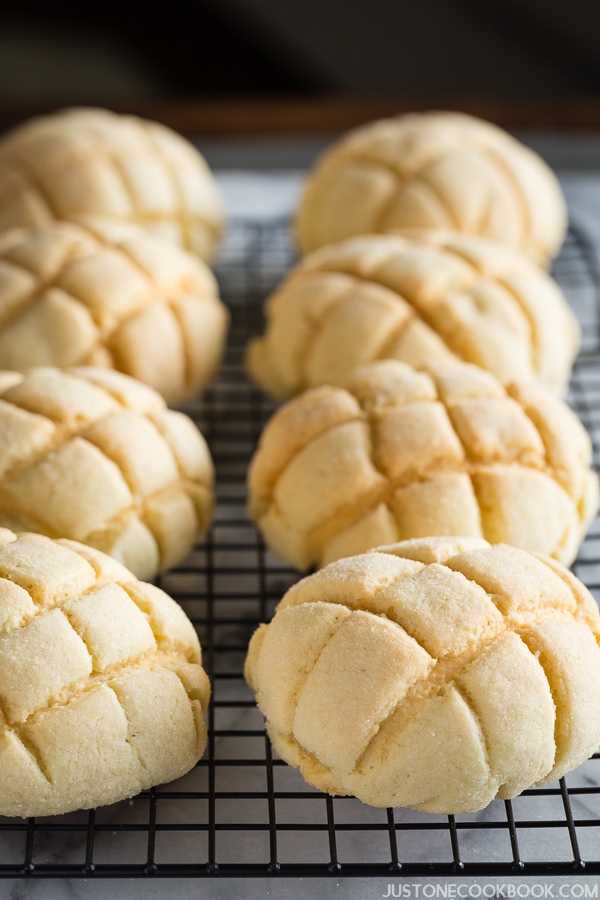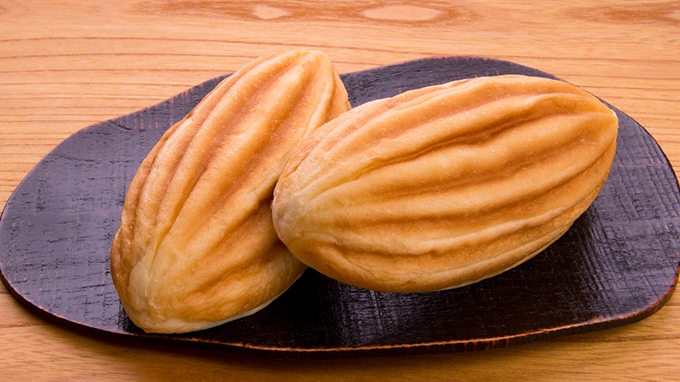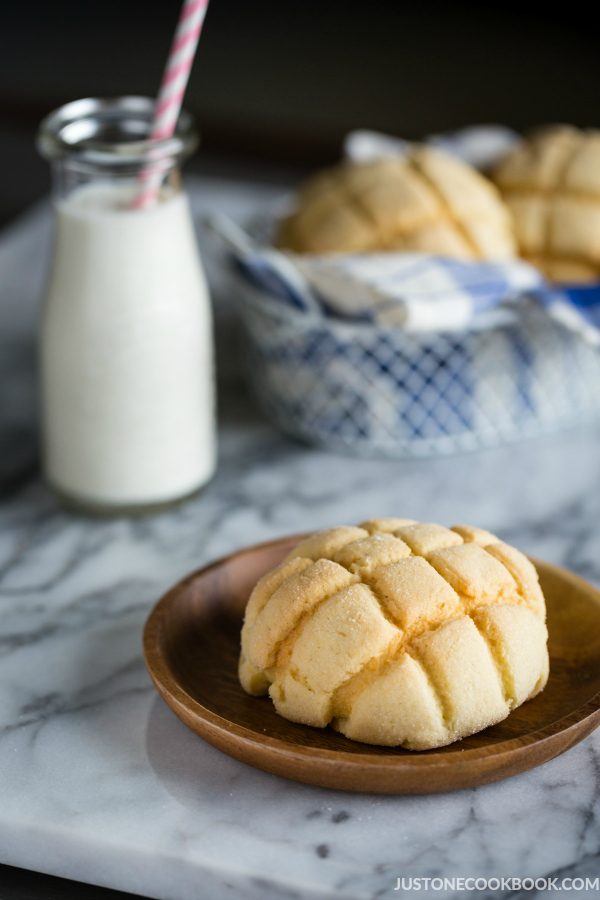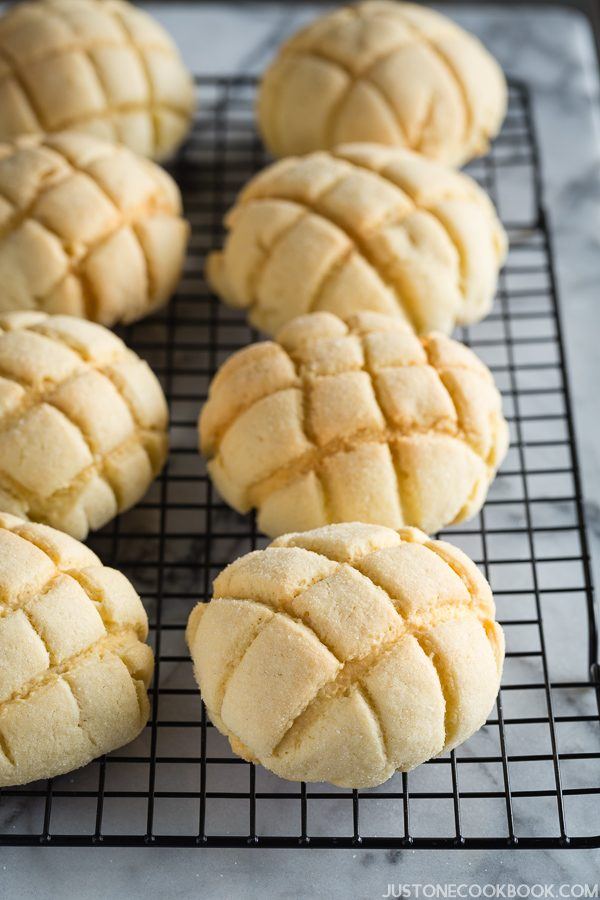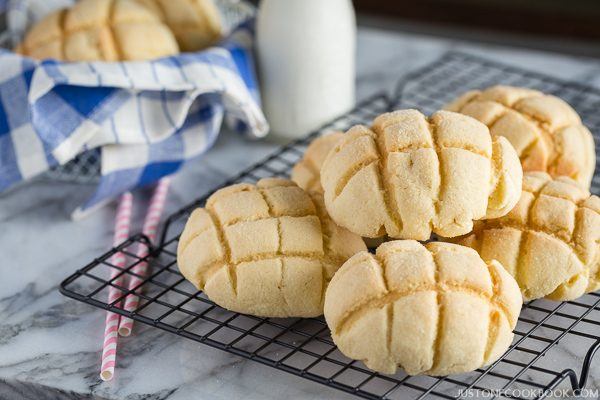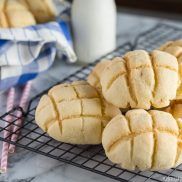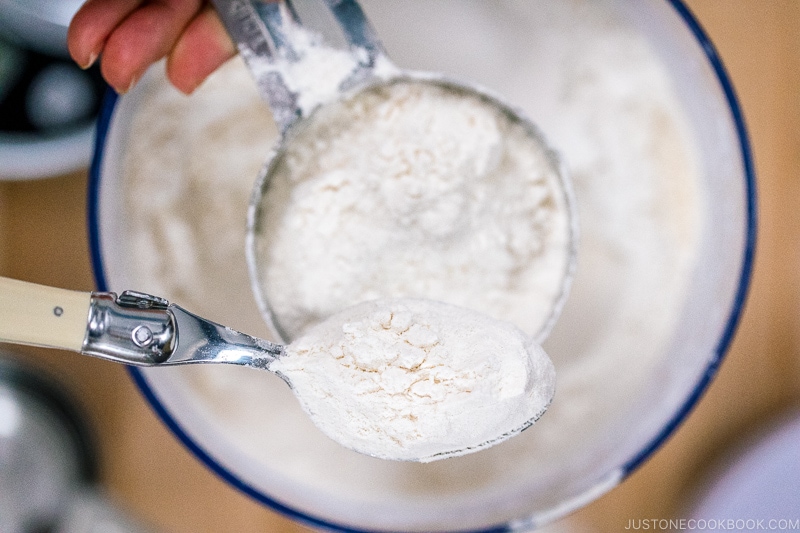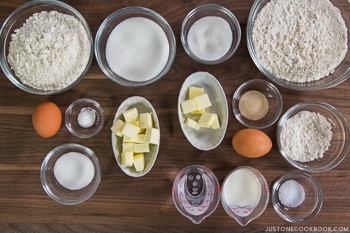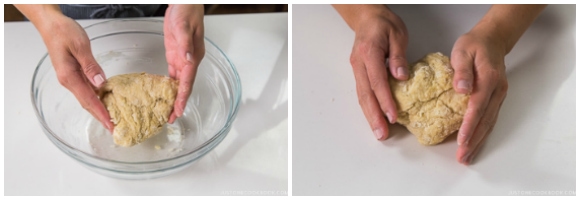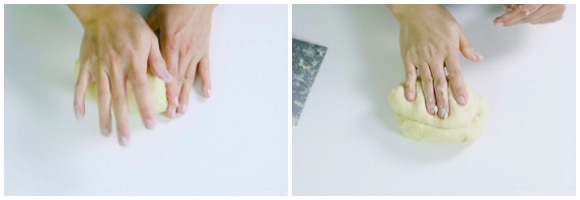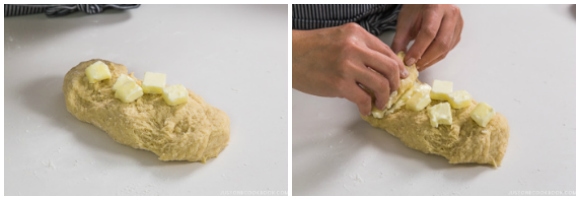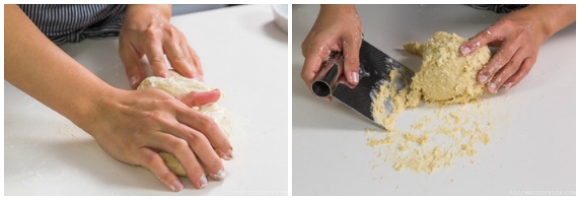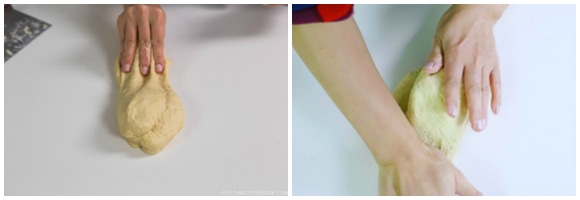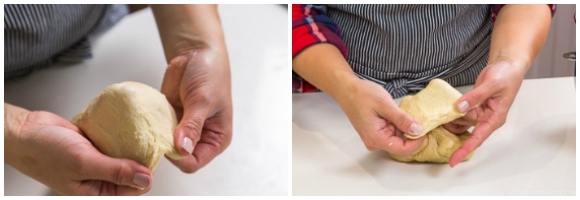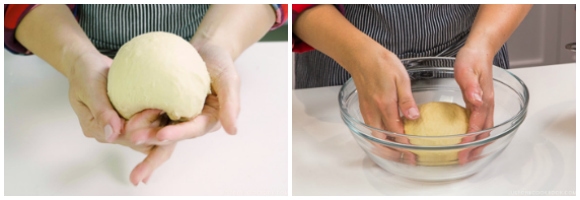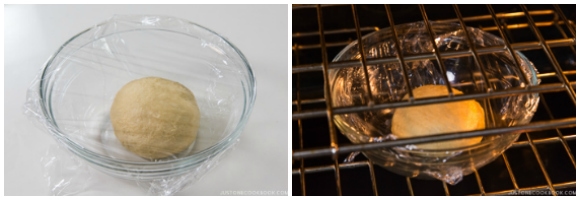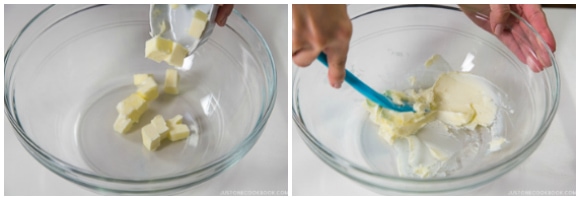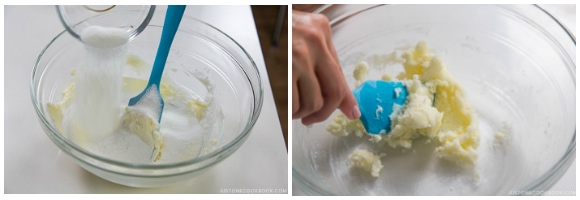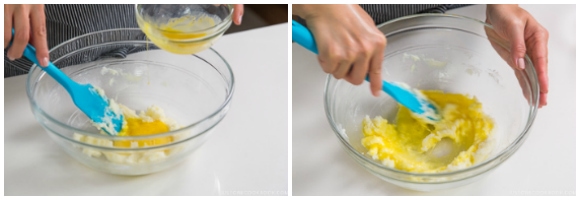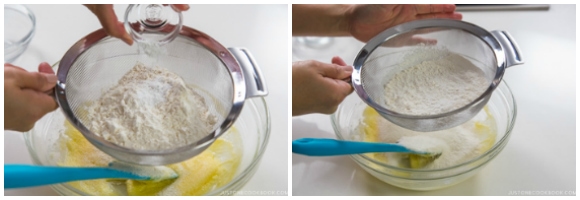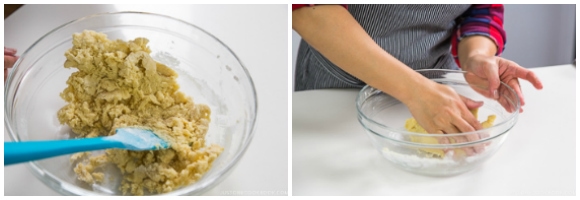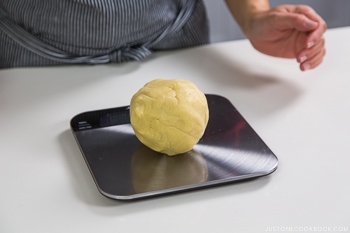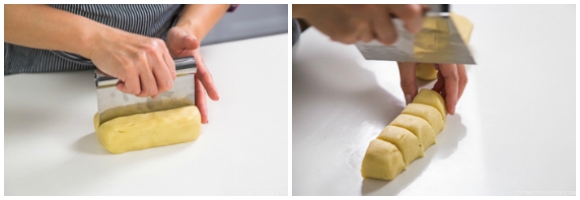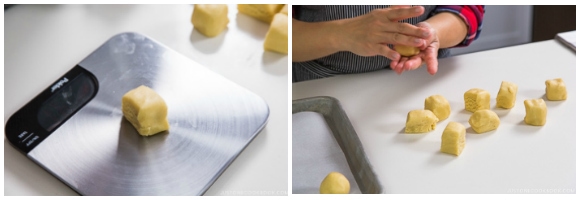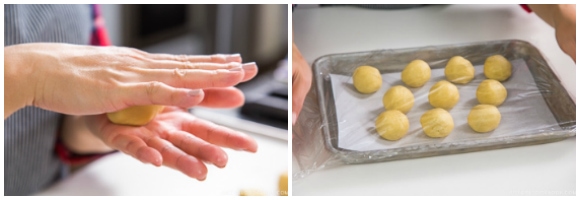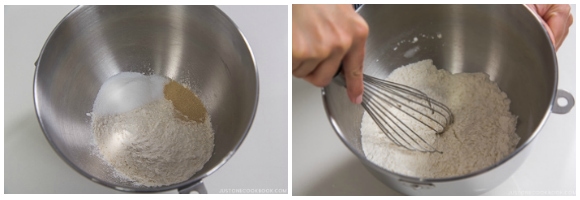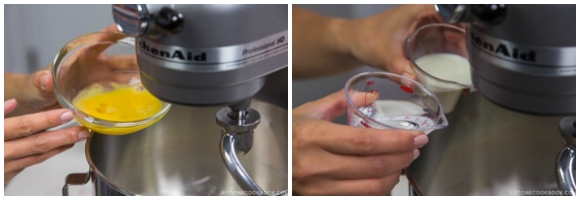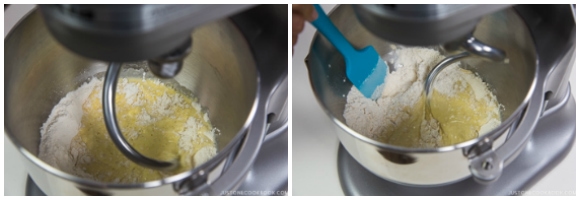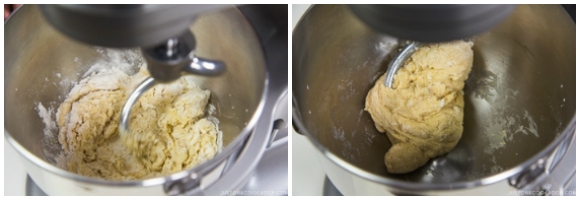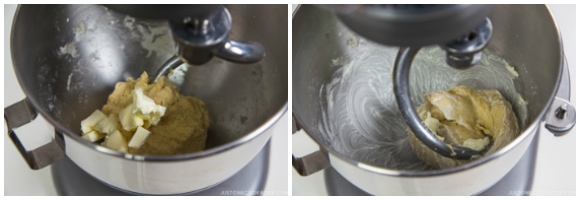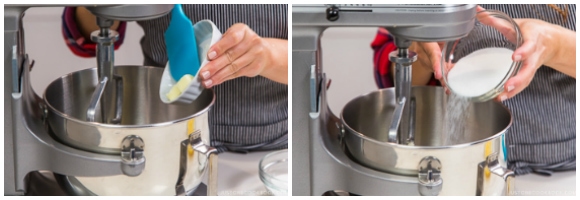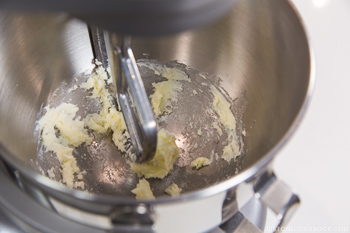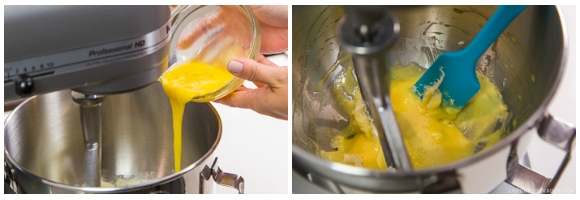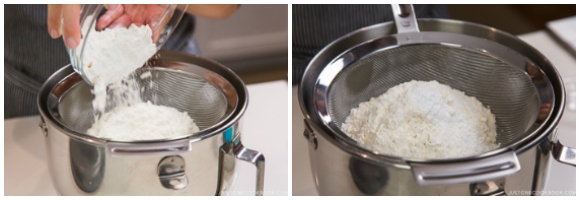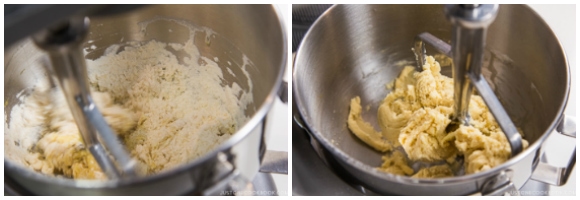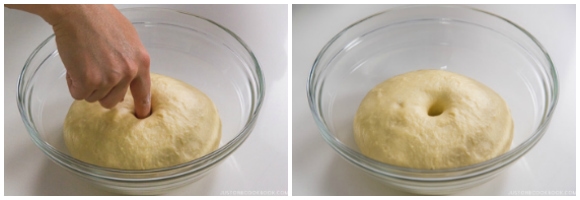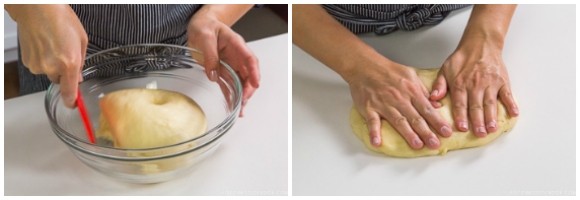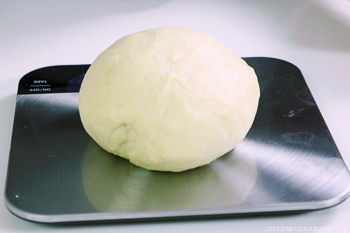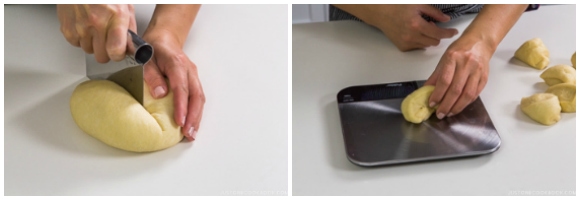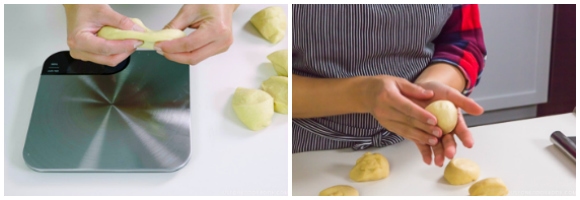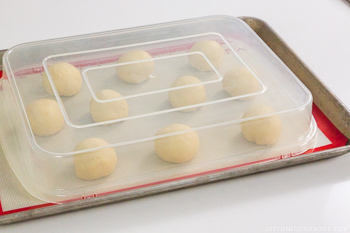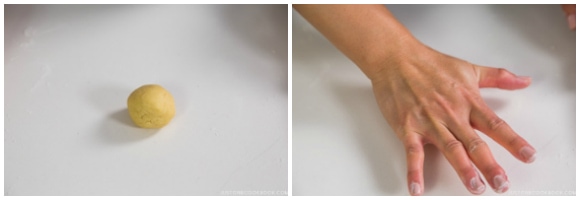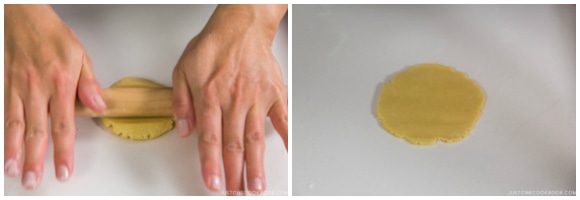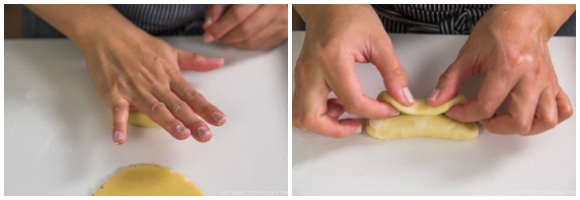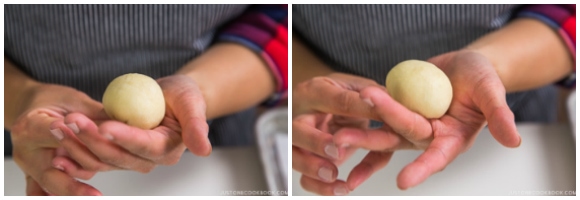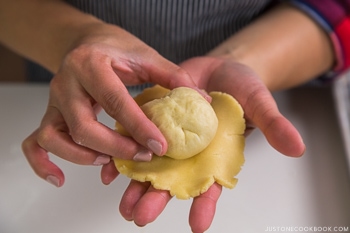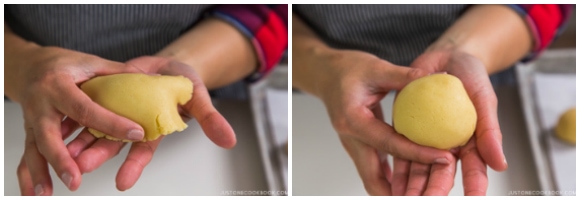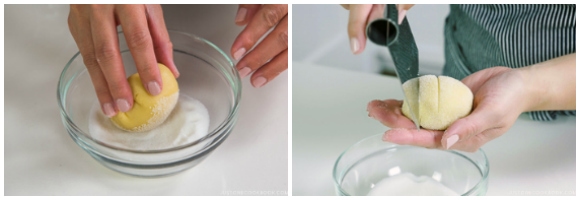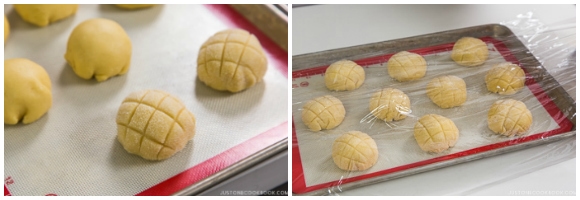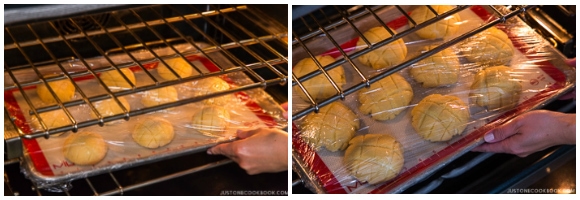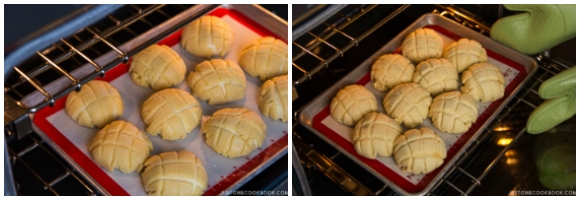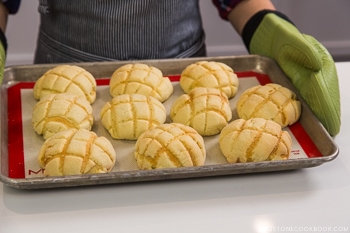Do you think about the foods that you used to enjoy in your childhood and still long for them once in a while? Japanese sweet bread, or what we call kashi pan (菓子パン), has a special spot in my heart, especially my favorite Anpan (あんパン) and these Melon Pan (メロンパン). Living abroad, there are not too many Japanese bakeries that sell freshly baked sweet breads; therefore I had to learn to make them myself. Today I’ll show you how to make Melon Pan with both the hand-kneading method as well as the stand mixer method.
What is Melon Pan?
Melon Pan is sweet bread covered in a thin layer of crisp biscuit crust with a crisscross pattern on top. The Japanese word for bread is pan (パン), which came from the Portuguese word for bread. Now why is it called melon? Traditionally, the bread does not include melon or its flavor. So why did it end up with this name? There are a few different theories for the origin of this sweet bread’s name, but there’s still no conclusive theory even today. Some say that the original melon pan was invented during the Meiji Era. The bread resembled an oriental melon (マクワウリ) with parallel lines on the crust and was filled with sweet white bean paste called shiroan inside. During that time, the oriental melon was sold as “melon” so they started to call this “Melon Pan.” In Taisho Era, a similar round bread with biscuit/cookie crust was introduced to western and southern western Japan (Osaka and Hiroshima area), and they named it “Sunrise (サンライズ)” bread. Later on, this round Sunrise bread started to be sold as Melon Pan throughout Japan, as the appearance resembles a muskmelon, which was (and still is) a highly prized fruit. Today, if you visit the Kansai area, the football shape bread you see above with white bean paste filling is what they call Melon Pan. They still refer to the round bread with biscuit crust Sunrise bread. Our local Andersen bakery that started in Hiroshima also calls their Melon Pan “Sunrise”. In Shikoku Island, it’s called “Koppepan (コッペパン)”. Other theories on the origin of the name say the word “melon” comes from “meringue (メリンゲ)”, which is placed on top of the bread dough before being baked. Maybe we’ll find out the name’s origin one day. Who knew this is quite a mysterious bread?!
How to Make Melon Pan
The Ingredients You’ll Need
For the Bread Dough
Bread flour – Weigh your flour using a kitchen scale or use the “fluff and sprinkle“ method and level it off. Cake flour – Learn more about cake flour and how you can make it using all-purpose flour and cornstarch. Kosher salt Granulated sugar Instant yeast Large egg Whole milk – I highly recommend using fullfat milk for this recipe. Water Unsalted butter
For the Biscuit Dough
Unsalted butter Granulated sugar Large egg Cake flour Baking powder
Hand Kneading Method
Stand Mixer Method
Variations of Melon Pan
There are some varieties that include chocolate chips, cocoa powder, or even matcha, and some bakeries put custard (cream) inside the bun. In recent years, a lot of bakeries started to add real pureed melon or melon syrup (from either real melon or the green melon syrup we use for shaved ice) in the dough to add “melon” flavors or color. However, for today’s recipe, I made my version with classic ingredients.
Bread Similar to Melon Pan in the World
Does your country have similar bread to Melon Pan?
Pineapple Bun – Hong Kong, Taiwan, China. We buy this bread from a Chinese bakery and it’s delicious! The biscuit/cookie crust is not as crispy or firm as Melon Pan, so it flakes very easily. Pineapple buns are softer and fluffier than Melon Pan. Soboro Bread – Korea Rotiboy (Mexican coffee bun) – Malaysia Conchas (Mexican sweet bread) – Mexico
Wish to learn more about Japanese cooking? Sign up for our free newsletter to receive cooking tips & recipe updates! And stay in touch with me on Facebook, Pinterest, YouTube, and Instagram.
